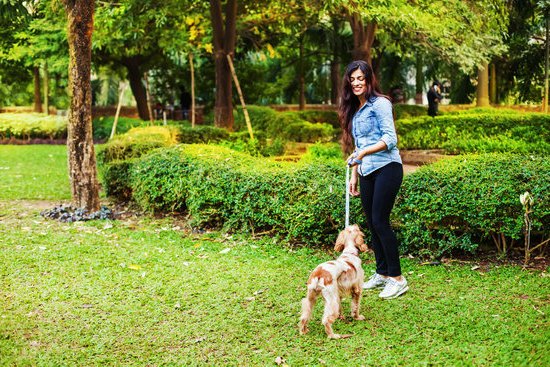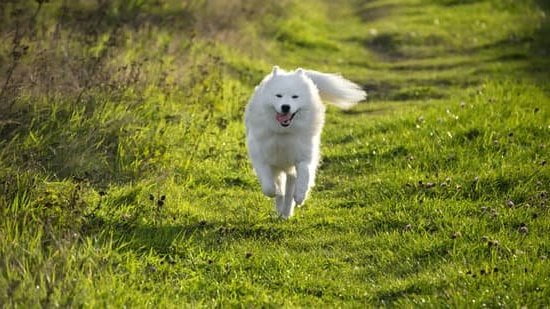Training your dog to come on demand is a crucial skill that every pet owner should prioritize. Whether you are at the park, in your backyard, or in an emergency situation, having a reliable recall command can ensure your dog’s safety and strengthen the bond between you. In this article, we will discuss the steps and techniques for teaching your furry friend to come when called.
Setting the foundation for successful training begins with establishing a strong relationship with your dog. Building trust and communication through positive interactions will make the learning process more effective and enjoyable for both of you. Additionally, choosing the right training method, whether it be positive reinforcement or traditional techniques, can play a significant role in shaping your dog’s behavior.
Creating a safe environment for training sessions is essential to minimize distractions and promote focus. By eliminating potential hazards and providing clear boundaries, you can set your dog up for success during training. With consistency and patience, you can teach your dog the Come command step-by-step and overcome common challenges such as fear, lack of motivation, and environmental distractions.
Setting the Foundation
Establishing a strong bond with your dog is essential for successful training, especially when teaching them to come on demand. Building trust and mutual respect forms the foundation of a healthy relationship between you and your furry companion. Here are some key steps to help you establish a strong bond with your dog:
- Quality Time: Spend quality time with your dog through activities they enjoy, such as playtime, walks, and cuddling. This not only strengthens your bond but also helps in understanding their behavior and needs.
- Consistent Training: Consistency is key when it comes to building a strong bond with your dog. Regular training sessions, positive reinforcement, and clear communication are vital in establishing a connection based on trust and respect.
- Positive Reinforcement: Use positive reinforcement techniques such as treats, praise, and rewards to encourage good behavior and create a positive association with training. This approach not only enhances the bond between you and your dog but also makes learning more enjoyable for them.
By setting the foundation through quality time, consistent training, and positive reinforcement, you can strengthen the bond with your dog and create a solid base for teaching them important commands like “Come.” Remember that patience, understanding, and love are key components in building a strong relationship with your furry friend.
Choosing the Right Training Method
Understanding the Importance of Training Methods
Training your dog to come on demand is not only a crucial skill for their safety but also enhances the bond between you and your furry companion. It is essential to choose the right training method that aligns with your dog’s personality and learning style. Understanding the benefits of positive reinforcement versus traditional training techniques can help you make an informed decision on how to effectively teach your dog the Come command.
Positive Reinforcement: A Rewarding Approach
Positive reinforcement involves rewarding your dog for exhibiting the desired behavior, such as coming when called. This method focuses on praising and rewarding good behavior with treats, toys, or verbal praise. By using positive reinforcement, you are encouraging your dog to associate coming when called with a positive experience. This approach creates a strong motivation for your dog to respond promptly to the Come command.
Traditional Training Techniques: An Alternative Approach
Traditional training techniques, such as leash corrections or verbal reprimands, rely on punishment to correct unwanted behavior. While these methods may be effective in some cases, they can also create fear or anxiety in your dog, leading to a breakdown in trust and communication.
Choosing traditional training techniques for teaching your dog to come on demand may result in reluctance or disobedience. It is important to consider the potential negative impact of these methods on your dog’s well-being and overall training progress.
Creating a Safe Environment for Training Sessions
When embarking on the journey of training your dog to come on demand, it is crucial to set up a safe and conducive environment for your training sessions. A safe environment not only ensures the well-being of your furry companion but also helps in minimizing distractions that may hinder the learning process. Here are some tips on how to create a safe training space for you and your dog:
- Secure the area: Before starting a training session, make sure that the area is secure and free from any potential hazards. This could mean closing doors, removing any sharp objects, or blocking off any areas where your dog could potentially get into trouble.
- Gather the right tools: Having the necessary tools and equipment at hand can help make training sessions more effective. This includes treats, a leash or long line for added control, and maybe even some toys to keep your dog engaged.
- Choose the right time: Pick a time when both you and your dog are calm and focused. Avoid training during busy times or when there are too many distractions around.
By creating a safe environment for training sessions, you are setting both yourself and your dog up for success. With the right preparation, you can ensure that your training sessions are productive and enjoyable for both you and your canine companion.
Remember, safety should always be a top priority when it comes to training your dog. By taking the time to create a secure environment for learning, you are laying down the foundation for successful training sessions ahead. So take the necessary precautions, gather your tools, and get ready to teach your dog how to come on demand with confidence and peace of mind.
Teaching the Come Command
Dogs are naturally curious and can easily get distracted by various stimuli in their environment. Teaching your dog to come when called is not only a matter of obedience but also crucial for their safety. The “Come” command can be a lifesaver in situations where your dog may be in danger or at risk. Here’s a step-by-step guide on how to train your dog to come on demand effectively.
First, choose a quiet and familiar location for training sessions to minimize distractions. Have some treats ready as rewards for when your dog successfully responds to the command. Start with short training sessions to keep your dog engaged and interested. Begin by calling your dog’s name followed by the “Come” command in a clear and enthusiastic voice.
When your dog starts moving towards you, offer plenty of praise and reward them with a treat once they reach you. It’s essential to make coming to you a positive experience for your dog every time. Consistency is key in training, so make sure to practice the “Come” command regularly, gradually increasing the level of distractions in the environment to test your dog’s responsiveness.
To further reinforce the behavior, you can use a long leash during training sessions to gently guide your dog towards you if they hesitate or get distracted. Avoid using the “Come” command in negative situations or when you plan to reprimand your dog, as this can create negative associations with the command. With patience, persistence, and positive reinforcement, you can successfully train your dog to come on demand and ensure their safety in various situations.
| Training Stages | Description |
|---|---|
| Choose Location | Select quiet place for training sessions |
| Use Treats | Reward with treats for responding positively |
| Practice Regularly | Consistent practice is essential for success |
Practicing Consistency
Consistency is the key to successful training when it comes to teaching your dog to come on demand. Dogs thrive on routine and repetition, so it’s essential to be consistent in your training approach. This consistency helps your furry friend understand what is expected of them and reinforces the desired behavior.
Setting a Training Schedule
One way to practice consistency is by setting a regular training schedule for your dog. Choose a time each day when you can dedicate a few minutes to practicing the Come command with your pup. Consistent, daily training sessions will help reinforce the behavior and make it easier for your dog to learn and remember.
Using the Same Verbal Cue and Hand Signal
When teaching your dog to come on demand, it’s important to use the same verbal cue and hand signal every time. This consistency helps your dog associate the command with the desired action. Whether you say “come” or “here,” stick with one word consistently. Similarly, if you use a hand signal along with the verbal cue, ensure that it remains the same throughout the training process.
Avoiding Mixed Signals
Consistency also means avoiding mixed signals during training. Be clear in your cues and commands, and ensure that everyone interacting with your dog uses the same language and gestures. Mixed signals can confuse your furry friend and hinder their progress in learning how to come on demand. By staying consistent in your approach, you’ll set up your dog for success in mastering this crucial command effectively.
Troubleshooting Common Challenges
Training your dog to come on demand is an essential skill that can ensure their safety and strengthen the bond between you and your furry friend. However, during training sessions, you may encounter common challenges such as distractions, fear, and lack of motivation. Addressing these obstacles effectively is crucial in achieving successful results in teaching your dog the Come command.
Distractions are a common challenge when training your dog to come on demand. Whether it’s other animals, loud noises, or interesting scents, dogs can easily get distracted and ignore your command. To overcome this issue, start training in a quiet environment and gradually introduce distractions as your dog becomes more reliable with the command. Use high-value treats or toys to keep their focus on you during training sessions.
Fear can also impede your dog’s ability to respond to the Come command. It’s important to identify the source of fear and address it through positive reinforcement techniques. Make sure that training sessions are always positive experiences for your dog by using patience, encouragement, and rewards. If necessary, seek guidance from a professional trainer to help build your dog’s confidence and trust in responding to the Come command.
In some cases, dogs may show a lack of motivation during training sessions. This could be due to boredom, fatigue, or simply not finding the rewards enticing enough. To boost motivation, vary the rewards you use during training – such as treats, praise, or playtime – based on what excites your dog the most.
Keep training sessions short and fun to prevent burnout and maintain their interest in learning. Remember that every dog is unique, so experiment with different motivators until you find what works best for your furry companion.
| Common Challenge | Tips for Overcoming |
|---|---|
| Distractions | Start in a quiet environment; gradually introduce distractions; use high-value treats |
| Fear | Identify source of fear; use positive reinforcement; create positive experiences during training |
| Lack of Motivation | Vary rewards; keep sessions short and fun; find motivators that excite your dog |
Reinforcing Good Behavior
As you continue on your journey to train your dog to come on demand, it is crucial to reinforce good behavior through positive reinforcement. Rewarding your dog for responding to the Come command is a vital aspect of the training process. By providing consistent rewards, you are not only motivating your furry friend but also strengthening the bond between you.
One effective way to reward your dog for coming when called is through treats. Choose high-value treats that your dog finds particularly enticing as a special reward for obeying the Come command. Make sure to have these treats readily available during training sessions and offer them immediately after your dog successfully responds to your call. This immediate positive reinforcement helps reinforce the desired behavior and encourages your dog to repeat it in the future.
In addition to treats, praise and affection are powerful rewards that can enhance your dog’s training experience. When your dog comes when called, shower them with verbal praise, petting, and belly rubs to show appreciation for their obedience.
Dogs thrive on positive attention from their owners, and by expressing joy and approval when they obey, you are reinforcing the behavior and creating a strong incentive for them to come reliably on demand. Remember that consistency is key in rewarding good behavior – make sure to consistently provide rewards every time your dog responds promptly to the Come command.
Advanced Training Techniques
Training your dog to come on demand is a crucial skill that can enhance safety and strengthen the bond between you and your furry friend. Once you have mastered the basics of teaching the Come command, it’s time to take your dog’s recall skills to the next level with advanced training techniques. By incorporating these methods into your training routine, you can further improve your dog’s responsiveness and reliability in any situation.
One advanced technique to consider is incorporating distance and distractions into your training sessions. Start by practicing the Come command in a familiar environment with minimal distractions. Gradually increase the distance between you and your dog, using a long line if necessary to ensure their safety. Introduce mild distractions such as toys or other people to test your dog’s ability to focus on you amidst potential distractions. Remember to reward them generously when they respond promptly to the command.
Another effective way to enhance your dog’s recall skills is by incorporating games into your training sessions. Play hide-and-seek with your dog by having someone hold onto them while you hide in another room or behind an object. Then, call out the Come command and reward them with treats or praise when they find you.
This game not only reinforces their recall skills but also adds an element of fun and excitement to their training routine. Be patient and consistent with these advanced techniques, and soon enough, you’ll notice significant improvements in your dog’s ability to come on demand even in challenging situations.
As you continue working on advancing your dog’s recall skills, remember that patience, consistency, and positive reinforcement are key factors in successful training. Celebrate every small success along the way, and don’t be discouraged by setbacks. With dedication and perseverance, you’ll be able to establish a strong recall foundation that will benefit both you and your beloved pet for years to come.
Conclusion
In conclusion, training your dog to come on demand is a fundamental skill that not only ensures their safety but also strengthens the bond between you and your furry friend. By setting a solid foundation of trust and understanding through positive reinforcement techniques, you can effectively teach your dog the Come command with patience and consistency. Creating a safe environment for training sessions and practicing regularly will help reinforce this behavior.
Remember, successful training is not just about teaching commands but also about building a deep connection based on mutual respect and communication. Troubleshooting common challenges such as distractions, fear, or lack of motivation requires patience and understanding. By addressing these obstacles with compassion and guidance, you can overcome them and continue to progress in your training journey.
As you celebrate your accomplishments in training your dog to come on demand, don’t forget to continue reinforcing good behavior and exploring advanced techniques to further enhance their recall skills. By maintaining a lifelong commitment to training, you are not only shaping your dog into a well-behaved companion but also fostering a strong bond that will last for years to come.
Investing time and effort in learning how to train your dog to come on demand is truly an investment in the relationship you share with your beloved pet.
Frequently Asked Questions
How Do You Train a Dog to Demand Attention?
Training a dog to demand attention involves reinforcing behaviors you want to see more of, such as sitting calmly or nudging your hand gently. Use positive reinforcement like treats to reward these actions consistently.
How Do You Train a Disobedient Dog to Come?
To train a disobedient dog to come, start in a quiet, familiar environment with minimal distractions. Use a cheerful tone and rewards like treats or praise when they come to you. Gradually increase the level of difficulty by adding distractions.
How Do I Get My Dog to Come When Distracted?
Getting your dog to come when distracted can be challenging but using high-value treats and practicing in different environments can help improve their focus. Start by training with mild distractions and gradually work up to more difficult situations while rewarding their obedience consistently.

Welcome to the blog! I am a professional dog trainer and have been working with dogs for many years. In this blog, I will be discussing various topics related to dog training, including tips, tricks, and advice. I hope you find this information helpful and informative. Thanks for reading!





